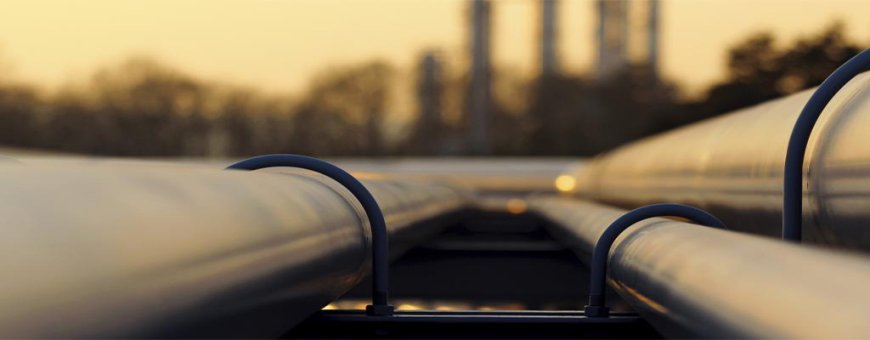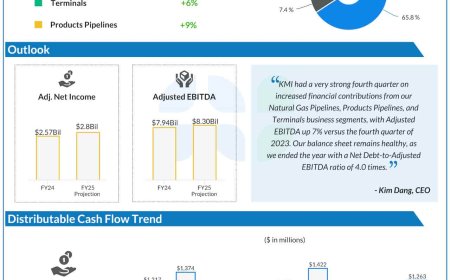Oil Majors Borrow Billions for Buybacks as Production Wanes
Oil prices fell for the second consecutive day on Tuesday, with market experts attributing the decline to the bearish nature of President Trump’s “Drill, Baby, Drill” agenda on oil prices. True to word, Trump signed an executive order on Monday repealing former President efforts to block oil drilling in the Arctic and along large areas off the U.S. coasts. Trump also repealed a 2023 memo that barred oil drilling in some 16 million acres (6.5 million hectares) in the Arctic. However, it’s going to take a lot more to lure oil executives to ramp up oil production. The latest Baker Hughes survey has revealed that U.S. oil drilling has declined dramatically to just one rig above its post-pandemic lows. Active oil drilling rigs fell by two w/w to 478 in the latest survey, leaving activity just one rig above its post-pandemic low; 149 rigs below November 2002’s post-pandemic high and 73 rigs lower than at the time of President Trump’s 2017 inauguration. The rig count has been in a downwards trend for over two years, with companies’ strategies remaining relatively conservative and productivity gains allowing output growth with fewer active rigs. Commodity experts at Standard Chartered have predicted that drilling will remain subdued in 2025, primarily because oil prices remain too low in real terms to justify expansion during a period of significant cost inflation. Falling profits are likely to override oil companies’ attempts to rapidly ramp up U.S. oil output. Two years ago, the Biden administration urged U.S. companies to increase production in a bid to bring down fuel prices. Back then, oil prices were hovering around $100 per barrel and oil companies were raking in record profits. However, last year witnessed a sharp slowdown in non-OPEC+ supply growth from 2.46 mb/d in 2023 to 0.79 mb/d in 2024, primarily caused by a reduction in U.S. total liquids growth from 1.605 mb/d in 2023 to 734 kb/d in 2024, with low oil prices disincentivizing more drilling. StanChart expects this trend to continue, with U.S. liquids growth expected to clock in at just 367 kb/d in 2025 before slowing down further to 151 kb/d in 2026. Over the past five years, oil and gas companies have been returning a bigger chunk of their profits to shareholders in the form of dividends and share buybacks. With oil prices declining over the past two years, these companies have resorted to borrowing more to keep their shareholders happy. Indeed, Bloomberg reported in late October that four of the world’s five oil “supermajors” saw fit to borrow $15 billion to fund share buybacks between July and September. According to a Bloomberg analysis, ExxonMobil (NYSE:XOM), Chevron (NYSE:CVX), TotalÉnergies (NYSE:TTE), and BP (NYSE:BP) wouldn’t have enough cash on hand to cover the dividends and share buybacks their investors are demanding, let alone increase their capital expenditure to drill more. “Borrowing to buy back shares isn’t uncommon in the oil business,” Bloomberg explained. “But a dimming outlook for oil prices next year means the cash shortfall is apt to continue over the longer term,” at a time when investors’ expectations for immediate returns continue. Changing Dynamics There are other structural and technical challenges that could limit how quickly the U.S. Shale Patch increases oil production under Trump. According to commodity experts at Standard Chartered, U.S oil production, and particularly unconventional (shale oil) production, has changed significantly from the time Trump first took office in 2017. StanChart points out that U.S. crude output clocked in at 13.40 million barrels per day (mb/d) in August 2024, an all-time high above the previous record of 3.31 mb/d set in December 2023. U.S. crude production has increased by 4.7 mb/d since the pandemic-era low of May 2020; however, it’s just 0.4 mb/d higher than the pre-pandemic high of November 2019, working out to an annual production growth rate of just 80 thousand barrels per day (kb/d) over this timeframe. StanChart notes that the dynamics of U.S. shale oil production make long-term supply increases difficult to maintain, noting that the country’s oil production is dominated by a few majors and independent producers, alongside private companies, rather than a national oil company as is often the case with many OPEC producers. These companies have largely left behind their trigger-happy, drill-baby-drill days and adopted strict capital discipline, eschewing rapid production increases in favor of returning more capital to shareholders in the form of dividends and share buybacks. StanChart also points out that extensive M&A activity in the sector has reduced the number of operating companies, changing the landscape from a patchwork of small producer acreages to larger contiguous acreage. This new modus operandi allows for complex drilling and completion techniques, including multi-pad wells with extremely long lateral sections that are able to optimize spacing and assoc

Oil prices fell for the second consecutive day on Tuesday, with market experts attributing the decline to the bearish nature of President Trump’s “Drill, Baby, Drill” agenda on oil prices. True to word, Trump signed an executive order on Monday repealing former President efforts to block oil drilling in the Arctic and along large areas off the U.S. coasts. Trump also repealed a 2023 memo that barred oil drilling in some 16 million acres (6.5 million hectares) in the Arctic. However, it’s going to take a lot more to lure oil executives to ramp up oil production.
The latest Baker Hughes survey has revealed that U.S. oil drilling has declined dramatically to just one rig above its post-pandemic lows. Active oil drilling rigs fell by two w/w to 478 in the latest survey, leaving activity just one rig above its post-pandemic low; 149 rigs below November 2002’s post-pandemic high and 73 rigs lower than at the time of President Trump’s 2017 inauguration.
The rig count has been in a downwards trend for over two years, with companies’ strategies remaining relatively conservative and productivity gains allowing output growth with fewer active rigs. Commodity experts at Standard Chartered have predicted that drilling will remain subdued in 2025, primarily because oil prices remain too low in real terms to justify expansion during a period of significant cost inflation.
Falling profits are likely to override oil companies’ attempts to rapidly ramp up U.S. oil output. Two years ago, the Biden administration urged U.S. companies to increase production in a bid to bring down fuel prices. Back then, oil prices were hovering around $100 per barrel and oil companies were raking in record profits. However, last year witnessed a sharp slowdown in non-OPEC+ supply growth from 2.46 mb/d in 2023 to 0.79 mb/d in 2024, primarily caused by a reduction in U.S. total liquids growth from 1.605 mb/d in 2023 to 734 kb/d in 2024, with low oil prices disincentivizing more drilling. StanChart expects this trend to continue, with U.S. liquids growth expected to clock in at just 367 kb/d in 2025 before slowing down further to 151 kb/d in 2026.
Over the past five years, oil and gas companies have been returning a bigger chunk of their profits to shareholders in the form of dividends and share buybacks. With oil prices declining over the past two years, these companies have resorted to borrowing more to keep their shareholders happy. Indeed, Bloomberg reported in late October that four of the world’s five oil “supermajors” saw fit to borrow $15 billion to fund share buybacks between July and September. According to a Bloomberg analysis, ExxonMobil (NYSE:XOM), Chevron (NYSE:CVX), TotalÉnergies (NYSE:TTE), and BP (NYSE:BP) wouldn’t have enough cash on hand to cover the dividends and share buybacks their investors are demanding, let alone increase their capital expenditure to drill more.
“Borrowing to buy back shares isn’t uncommon in the oil business,” Bloomberg explained. “But a dimming outlook for oil prices next year means the cash shortfall is apt to continue over the longer term,” at a time when investors’ expectations for immediate returns continue.
Changing Dynamics
There are other structural and technical challenges that could limit how quickly the U.S. Shale Patch increases oil production under Trump. According to commodity experts at Standard Chartered, U.S oil production, and particularly unconventional (shale oil) production, has changed significantly from the time Trump first took office in 2017.
StanChart points out that U.S. crude output clocked in at 13.40 million barrels per day (mb/d) in August 2024, an all-time high above the previous record of 3.31 mb/d set in December 2023. U.S. crude production has increased by 4.7 mb/d since the pandemic-era low of May 2020; however, it’s just 0.4 mb/d higher than the pre-pandemic high of November 2019, working out to an annual production growth rate of just 80 thousand barrels per day (kb/d) over this timeframe.
StanChart notes that the dynamics of U.S. shale oil production make long-term supply increases difficult to maintain, noting that the country’s oil production is dominated by a few majors and independent producers, alongside private companies, rather than a national oil company as is often the case with many OPEC producers. These companies have largely left behind their trigger-happy, drill-baby-drill days and adopted strict capital discipline, eschewing rapid production increases in favor of returning more capital to shareholders in the form of dividends and share buybacks.
StanChart also points out that extensive M&A activity in the sector has reduced the number of operating companies, changing the landscape from a patchwork of small producer acreages to larger contiguous acreage. This new modus operandi allows for complex drilling and completion techniques, including multi-pad wells with extremely long lateral sections that are able to optimize spacing and associated infrastructure. These drilling and completion efficiency gains have allowed production to continue growing despite a decline in rig count.
StanChart’s views appear to match those of Goldman Sachs’. According to GS, technological and efficiency gains have accounted for virtually all growth by the Texas-New Mexico shale basin since 2020; however, the bank has warned that “the Permian is maturing, and its deteriorating geology will weigh on the production of crude oil down the road.” The Permian rig count has declined nearly 15% from last year’s April high to 309 currently, and is 30% lower than its 2018-2019 average, Goldman Sachs has revealed. Earlier, GS predicted that the Permian rig count will be below 300 by the end of 2025.
By Alex Kimani for Oilprice.com











































